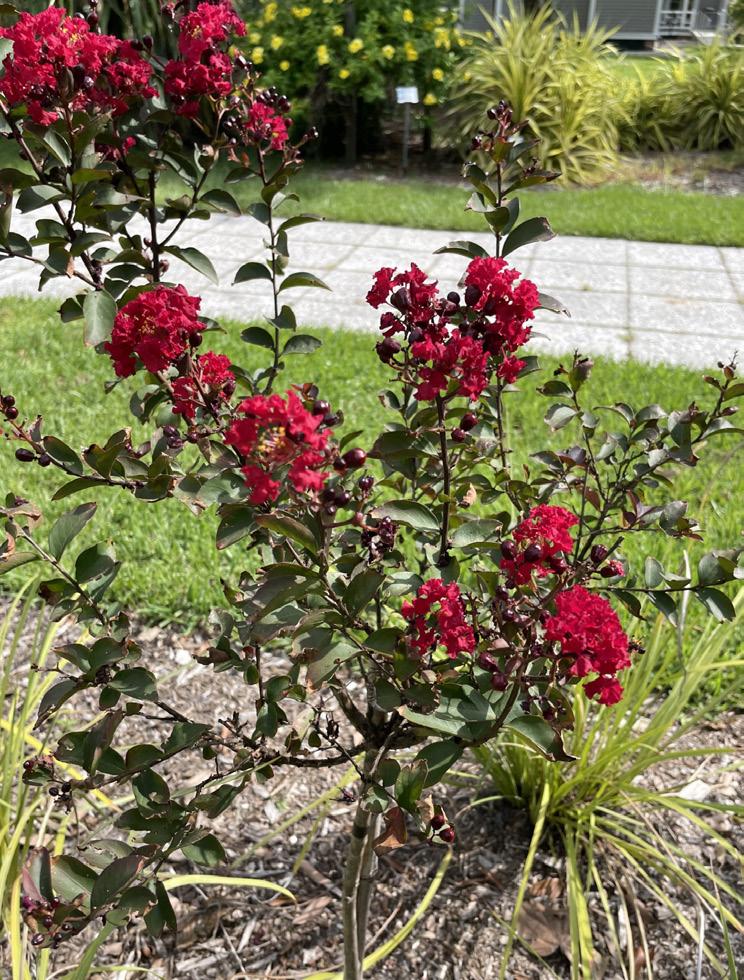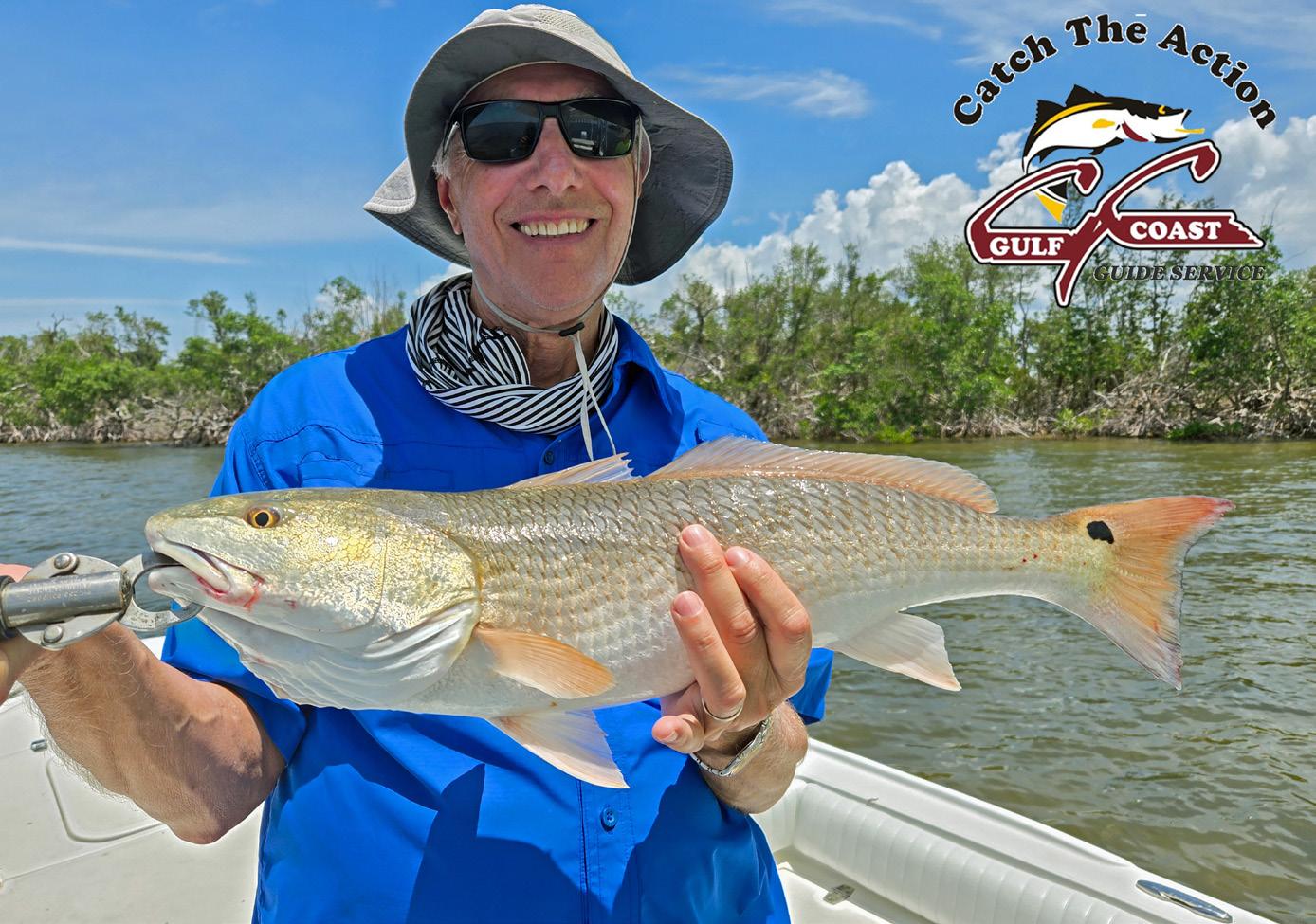JUNE 2025





This is the fourth article in a series about what Developer Settlement is, how it is unfolding in Verandah, and the implications for homeowners. It is a common legal process that occurs when the developer of a community, in this case Kolter, turns over governance to its residents, the Verandah Community Association.
This article focuses on two claims in the Association’s legal action. While our two claims are separate, they both relate to the expenditure of VCA funds to maintain property it did not own.
Between 2012-2013 and prior to the turnover of the Association to its owners, the Developer had complete control over the Club and the VCA and used VCA funds to maintain and/or improve property owned by the Developer, specifically, Blossoms and the River House boardwalk.
Restitution of funds is sought in the amount of $240,000.
Similarly, the Developercontrolled VCA signed a Use Rights and Easement Agreement with the Developer assigning improvement and maintenance responsibilities for Oak Park and the Kayak Livery to the Association. Both amenities are owned by Verandah Development, LLC located on its River Village parcel alongside the other River Village amenities, all owned by the same. The VCA derives no specific benefit from improving and maintaining these River Village facilities and contends that the agreement does not meet the Statutory standard of “fair and reasonable.” While no restitution is sought, the VCA seeks to terminate the Agreement which would eliminate future repair and replacement expenditures on property it does not own.
The Atlantic hurricane season runs from June 1 through November 30 and the National Hurricane Center began issuing daily “tropical outlooks” on May 15. We can’t stop hurricane season every year, but we can be prepared to keep ourselves and our homes safe. We encourage you to use our helpful tools to stay informed about preparedness, evacuation and shelter information. Go to vcalife.com and select “Helpful Documents.” Click on the folder entitled “Hurricane Information” and there you will find a wealth of information including all that is done by the employees of the VCA to keep our community safe. Included in this section is the Lee County All Hazards Guide which is very informative.
We encourage you to prepare early. By planning ahead, you can be sure that your stress level will be lower, outcomes better, and that you will recover more quickly.
Stay Safe – Be Prepared


Production Directors
Stephen Miller
Elizabeth Miller
Sales Department
Tom English
Margo Williams
Laura Berrio
Bret McCormick
Miranda Ledbeter
Alyssa Debban
Justein Matthias
Anissa Stender
Webmaster
Selina Koehler
Production Manager
Lee Nostrant
Production Department
Elaine Donholt
Ruth Nekoranec
Katie Heystek
Dianne Strout
Karen Kalisz
Michelle Feeney
Andie Reynolds www.seabreezecommunications.com
The Verandah View is a publication of the VCA. We work with Seabreeze Communications, a marketing company whose advertising provides the revenue to produce the View at no cost to the Verandah community. The content is prepared by the VCA Communications Committee.
Elizabeth Lynch, Editor
Alice Borowsky
Stephanie Levin
Susan Shamey
Seabreeze Communications, Inc. does not endorse any advertising as it relates to the communities. Advertising is not screened by Seabreeze Communications, Inc.
All rights reserved. Reproduction or utilization of these contents in any form by any electronic, mechanical, or
permission of the
The Publisher is not responsible or liable for misinformation or misprints herein contained and reserves the right to accept or reject all copy deemed unsuitable for publication.
Norm Toback
David Keeley, Board Liaison
Linda Lach, Adviser and Board Member
When you think of the birds that define Verandah’s ponds, the Great Blue Heron likely comes to mind. Towering and elegant, this bird is a common, yet awe-inspiring sight around the ponds and waterways of Verandah. Whether patiently hunting along the water’s edge or gliding overhead with slow, deliberate wingbeats, the Great Blue Heron commands attention.
Standing up to four feet tall with a wingspan that can exceed six feet, the Great Blue Heron is the largest heron in North America. Its plumage is predominantly slate-blue, with a long, sinuous neck and a dagger-like bill that is ideal for spearing fish. Adding to its regal appearance is a striking black plume extending from just above its eye to the back of its head.
(continued on page 5)


Male and female herons look similar, though males are typically larger. During the breeding season, both sexes develop special plumes on their necks and backs, adding to their already dramatic look. Their courtship displays are equally impressive, with ritualized preening and neck-stretching.
Juvenile Great Blue Herons are more subdued in color, lacking the bold black plumes and displaying duller grayish-blue feathers. Watching a young heron practice fishing can be a delightful sight—they often fumble and jab at the water awkwardly before mastering the graceful precision of their elders.
(continued on page 6)
1. The Great Blue Heron weighs only 5 to 6 pounds due to its hollow bones, a feature common in birds. Despite their large size, great blue herons are nearly silent in flight due to the special structure of their feathers, which reduces turbulence and noise, helping them sneak up on prey.
2. They are expert hunters, known for their patience and ability to strike with lightningfast reflexes to catch fish, amphibians, reptiles, and even small mammals. They use two distinct hunting strategies—standing motionless and waiting for prey to come close or slowly stalking

their target with deliberate steps before striking. Their necks have a specialized vertebra structure allowing them to coil like a spring and strike prey with lightning speed and precision.
3. Great Blue Herons can be found throughout North America, from Canada to the Caribbean, Central America, and even parts of South America. The Seminole tribe and other Native American groups in Florida regarded the heron as a symbol of patience, self-reliance, and resourcefulness.
4. They are highly adaptable and can live in both freshwater and saltwater habitats, including ponds, marshes, and estuaries.
5. In flight, they tuck their necks into an “S” shape, a distinguishing feature from cranes, which fly with necks outstretched.
6. Great Blue Herons are solitary hunters but often nest in colonies called rookeries, sometimes with hundreds of nests in one area. Their nests are large and built from sticks, often high in trees or shrubs near water; although in Florida, they may also nest in mangroves.
(continued on page 7)
7. Great Blue Herons are skilled at regulating their body temperature in Florida’s heat by panting and using a behavior called “gular fluttering,” where they rapidly vibrate the throat muscles to cool down. They also hold their wings open to allow air to circulate through their body.
8. A heron’s diet is diverse and opportunistic—besides their primary diet of fish, they have been observed eating snakes, insects, baby alligators, and even other birds.
9. They are relatively long-lived for birds, with some individuals reaching over 15 years in the wild.
10. In Florida, the Great Blue Heron has a special color variation. This white morph, called the Great White Heron, is found mainly in southern Florida.
The Great Blue Heron is more than a striking figure; it’s a reminder of the beauty and balance of wetland ecosystems. Seeing one in Verandah is like stepping into a painting where patience and grace come to life. Take a moment to admire this bird the next time you see it standing statuelike in the shallows of our ponds—it’s a true emblem of Verandah’s natural splendor.









The “Deans” of Verandah Community University thank all the residents who attended the above events for the 2024-2025 semesters. We had great attendance ranging from 60 to 130 participants with a variety of speakers for everyone’s enjoyment. Four of the classes were presented by outside speakers and three were from residents.
We are just as excited for the 2025-2026 semesters of Verandah Community University as we were for last year. The majority of speakers for the coming semesters are Verandah residents. A hint to a few of our presentations include a winemaker, a research biologist, an FBI agent, and a journalist to name just a few.
Also we thank the Club for use of the lovely River House for our events.
In September look out for our flyers around the club, on Verandah Facebook, and in emails for this entertaining, interesting and fun lineup.
And remember, no notes or tests are required!

If you are looking for some great entertainment on a Friday evening, look no further than the Art Walk and Music Walk which happen monthly from 6 to 10 p.m. in the downtown River District.
On the first Friday of each month, the Art Walk fills First Street with exhibits of local and regional artists exhibiting their unique art styles. Enjoy the displays and chat with the artists. You just may find that piece of art you’ve been looking for or even didn’t know you needed!
Upcoming dates are June 6, July 4 and every first Friday throughout the year.
If it’s music you like, join Music Walk the third Friday of each month from 6 to 10 p.m. You will hear jazz, blues, rock and roll and you can dance in the streets if you care. Enjoy local and regional groups doing what they do best – playing their original songs and old favorites as well.
These Friday evenings are great fun and the music really rocks! Upcoming dates are June 20, July 18 and every third week of the month until December.

Lily & Reggie are both rescues from Philadelphia who had a rough start to life, but are now living their best lives in Verandah. These two adorable dogs are Lily who is about 5 and Reggie who is about 10. They love their walks on the nature trails and meeting up with their neighborhood dog friends and their humans.
Lily has never met a person (or lap) she doesn’t like. Her favorite things in life are walks, food and long naps on the couch. She is a mamma’s girl.
Reggie was super shy around people before he moved to Verandah. His time here has transformed him. He now loves when people come to the house so he can drop
toys at their feet and chase them as long as they’re willing to throw them. His favorite things in life are chasing a tennis ball and playing with his toys. He is a daddy’s boy.
Lily and Reggie are the beloved pets of Holly and Bill Morlan.
A beloved pet’s photo, whether dog, cat, horse, bird, or fish will be featured in the Verandah View Pet of the Month. Resident owners can send in a photo with pet’s name, owner’s name, type of pet, and one sentence or two about their pet by texting Susan Shamey at (724) 355-2478 or email sshamey@ymail.com. Pet photos will be randomly chosen from entries – big or small. All pets are beautiful to their owners.

In the May 2025 edition of the Verandah View the article announcing the appointment of five homeowners to serve on the VCA Governance Committee incorrectly spelled the name of one of the new members. The correct spelling is Janie DeVries.


















KAREN M. MAXWELL, HORTICULTURE SPECIALIST AND HORTICULTURE PROGRAMS COORDINATOR AT EDISON AND FORD WINTER ESTATES
Often mistaken for dead trees during the winter season, the family of Lagerstroemia, Crape Myrtles, are bursting forth with blooms ranging from white to deep magenta. At Edison and Ford Winter Estates, we have an unusually rare collection of species, as well as some uniquely tropical specimens.
The old-world spelling of crape probably originated in Europe with an old French word indicating the color crimson. Sometimes spelled as crepe, which is derived either from the old Greek for mulberry, a plant closely associated or in reference to the delicate paper-like flowers and thin bark. To clarify, both common spellings are acceptable and appear to be regional adaptations. While belonging to the plant order of myrtles, these trees are not true myrtles, so botanists suggest the name be presented as a single world, i.e., crapemyrtle or crepemyrtle.
An exceptional tropical species is the Queen Crape Myrtle (Lagerstroemia speciosa), also known as Pride of India, which is far less cold tolerant than the more common Lagerstroemia indica that decorate many roadways and parking lots throughout the South. The Queen naturally produces
lavender blooms and thrives in our zones 1011. Pink flowered Queens exist but in 2015, the USDA in Miami introduced a new hybrid that produced the largest pink flower spikes ever seen. Appropriately, the introduction was named Big Pink and it grows in the riverside gardens in front of Edison’s home. The Queen naturally grows as a multi-trunk, but good pruning will strengthen the tree to grow as a single trunk or “standard” flowering tree, reaching 50 feet or more in height. (continued on page 14)

The Queen Crape will suffer if grass or ground cover is planted around its base. For additional summer color, consider caladiums that will thrive in the Queen’s shade. As the common name implies, the Queen is native to Asia but it is not considered a nuisance or invasive species in Southwest Florida.
In Hindu, the Queen Crape is known as the Banaba tree. Naturalists or those who study traditional Ayurveda or Indian medicine may recognize the name Banaba. With many medicinal properties, scientists are still examining the efficacy of a concoction of the l. speciosa leaves, particularly in combination with the popular drug known as Metformin, used to reduce glucose levels in the blood, thereby helping diabetes patients.
Best planted away from the house – ideally on a boundary line or in a sunny corner –this large species produces a wide canopy; however, fallen flowers and leaves may make for a messy yard. Give them full sun and don’t be surprised if the remaining leaves turn red in the late winter. This is normal. Protect its lower trunk from errant mowers and similar landscape tools, as the bark is quite delicate and easily damaged; belying the fact that it protects a trunk known for its high quality and extremely durable lumber with a similar ranking to teak on the Janka wood hardness scale. Wood from lagerstroemias is also quite termite resistant.
Much more widespread, with some specimens (continued on page 15)



VISITORS CAN VIEW SEVERAL SPECIES OF CRAPE MYRTLES AT EDISON AND FORD WINTER ESTATES.
living as far north as Massachusetts, is the multi-trunked or shrub-like Lagerstroemia indica, the Crape Myrtle, growing to only about 20 feet in height. Certainly not a flowering tree for snowbirds, these China natives are completely deciduous in winter, providing an opportunity for the sun to stream through their bare canopies to winter flowering annuals planted beneath. This cold hardy lagerstroemia can die back with frost, but if not fed or watered late in the season in lower zones, such as zones 6-9, no harm will be done, and the shrub will bounce back with warmer temperatures.
Love the color but not the size? Consider dwarf varieties of L. indica with names such as Cherry Dazzle, My Fair Myrtle, Rikki Tikki Pink and Black Diamond (with red flowers against dark colored leaves). Dwarfs may be easily grown in pots, but when in the ground, super drainage is the key to success.
All lagerstroemias require regular water, particularly during extensive dry periods, to look their best. With additional water, these “southern lilacs” will also do quite well in arid gardens once they are established. These plants prefer slightly
acidic soil with a pH of 6 to 6.5 and if your soil is purchased for a container or alkaline in the garden, mix in good compost or coffee grounds. Elemental sulphur can easily be purchased online and will also aid in lowering pH for a longer period of time than just using organics. If soil is too rich, the shrubs may grow healthy branches and leaves but have few flowers (which appear on new growth).
For our botany hobbyists, though generally bare during the winter months, L. indica has its unique features that include exfoliating or peeling bark and sprays of seed pods that are fun to use in floral arrangements. If shrubs are pruned to restrict the height of your Crape Myrtles, reaching the seed pods is a cinch.
Seed dispersal for lagerstroemia is known as explosive dehiscence because the dried pods literally explode or pop open, letting the wind disperse the shower of seeds. By looking around (continued on page 16)
the gardens at Edison and Ford Winter Estates, you will find many varieties of plants that employ this method of seed dispersal. Upon close examination of the seed pods on henna plants in the wildflower garden or community garden in late fall to early winter, it is easy to understand how these plants are both classified in the plant family Lythraceae, which also includes cuphea and loosestrife.
Crape Myrtles may be started from seed; however, they are quite slow to germinate and care must be taken to prevent the seeds from rotting before

they germinate. Seeds from hybridized cultivars will not typically produce the same color flower – if it’s flower color you are looking for, then be sure to propagate the plant vegetatively.
A close neighbor to the Kapok tree at the Estates is the Siam Crape Myrtle (Lagerstroemia siamica or syn. L. floribunda var. cuspidate). Very similar in all its growth and flowering patterns to L. speciosa, this native of Thailand and Myanmar is indigenous to their humid forests and will grow to more than 90 feet in its native habitat, but only to approximately 30 feet

in Southwest Florida (if conditions are right). This particularly tropical Siam Crape Myrtle has a smaller range of colors than the L. indicia and will not tolerate any frost. It is often chosen for tropical landscapes for its stunning exfoliating bark on the multi-stemmed trunk.
Another cultivar at the Estates can be found along the allée, leading to the fountain and just beyond the security tent. “Natchez” grows to 35 feet or so, and is the most widely planted variety throughout the South. It produces white flowers and cinnamon(continued on page 17)

CRAPE MYRTLES ARE AVAILABLE IN SEVERAL COLORS, INCLUDING WHITE, LAVENDER, PINK AND RED. SUMMER IS A GOOD TIME TO SEE THE TREES COVERED IN BLOOMS.

colored wood and is considered one of the few lagerstroemias that have a fragrance when in bloom.
The next time you visit, enjoy viewing the collection of Crape Myrtles, predominantly on the riverside, while the Thai or Siam (the old name of Thailand) Crape Myrtle is just across from the Kapok (near the laboratory).
It’s probably appropriate to close with addressing the issue of “crape murder.” A common problem in the South, it is the
crime of crimes when it comes to pruning –often a case of “monkey see, monkey do.” It is never appropriate to hack this beautiful tree, creating nubby growths with weak flower stems.
Some educated pruning is always encouraged, but the smart move is purchasing a cultivar that doesn’t grow too big for your garden so that you can always see its beautiful summer flower show!
Warm sunny days with calm seas followed by afternoon thunderstorms is our typical weather pattern for June as summer sets in. Although Southwest Florida is rapidly growing, you notice a big decline of boaters and anglers over the next several months.
As far as fishing goes there will be good days and bad ones, strong tide days should give you the best opportunities. With the summer heat the bite is often better early and late in the day, however, be aware of thunderstorms in the afternoons. If you have the opportunity, fishing after a late day thunderstorm is often good once the storms pass. However, we have very nasty and dangerous thunderstorms, do not put yourself or others at risk if lightning is in the area.
Tarpon fishing is in full swing throughout the month, fishing around the full and new moon tides may give you the best shot at conquering the silver king. Warm water brings a lot of sharks to our coast, if you want to battle a big fish and avoid the tarpon crowds this may be for you. Anchoring up with fresh bait soaked on bottom or under a float while waiting in the shade with a cool beverage is relaxing and productive. Do not be surprised if you hook a tarpon though!
If you are looking to bring home dinner, snapper may be your best bet. Decent size mangrove snappers are moving inshore as well as the gulf passes. Large mangrove snapper plus grunts and other bottom dwellers are often plentiful in gulf waters within sight of land over hard bottom and reefs. Shrimp, squid, and small pinfish or pilchards are candy to snapper, but you need to remember they have keen eyesight and easily become leader shy. If the water clarity is good, dropping down to 10- or 12-pound fluorocarbon leader may be necessary to fool the larger fish. A fresh block of chum also helps with the bite, especially offshore.

The best snook fishing through the summer months is generally in and near the gulf passes and islands. Snook may range in size from fish under 20 inches to big females over 40 inches. This is (continued on page 19)
their mating season with large schools of fish found along the beaches and nearby structure with strong tide movement. If they’re active and hungry they will pounce on a variety of baits (with live the top choice), if not, they can be difficult to entice.
With warm water and high tides, under the shade of mangrove shorelines and structures such as docks and piers are the place to hunt redfish. Live bait, cut bait, and lures all work, just some better than others at different times. Many anglers prefer to soak a smelly cut bait on bottom and let the scent bring in the fish. It works great for redfish, and often snook and trout, just be prepared to unhook a number of catfish.
Sea trout, another tasty inshore fish are plentiful and found throughout the inshore waters. Most are caught over grass flats in 3 to 8 feet of water. Fishing over grass flats one can expect a mixed bag including ladyfish, mackerel, jack crevalle, sharks, bluefish, and other species. The best trout action occurs before the midday sun heats up the shallow water. It’s possible to hook sea trout on a variety of lures and live baits.
Inshore and nearshore, anglers can expect Spanish mackerel and cobia. In the gulf, fishing around reefs is the best bet. Inshore, near the gulf passes and deeper grass flats. Watch for birds as they are following bait schools as are the cobia and mackerel.
If you’re making a day of it, as the midday heat sets in, it is the perfect time to head to one of our beautiful beaches for a swim and picnic lunch. This is also a great time to cool off while wetting a line and possibly get into some good catch and release snook action as schools are working up and down the surf. If a picnic lunch is not your thing, you can drop in to one of the many great island restaurants accessible to boaters for a fresh prepared meal and beverages.
As we enter summer, many anglers, including me, prefer to get an early start and back to the dock before the midday heat sets in. If you fish all day or only a few hours, bring plenty of water and drink often to stay hydrated. It’s easy to get caught up in the moment on a hot day and before you realize it you are past the point of return.
For charter information, please contact us at Gulf Coast Guide Service and “Catch the Action” with Capt. Bill Russell, call or text (239) 410-8576, website: www.fishpineisland.com, email: gcl2fish@live.com.
Capt. Bill Russell is a native and lifelong resident of Pine Island who has spent his entire life fishing the waters surrounding Pine Island and Southwest Florida. For the past 29 years, Bill has been a professional fishing guide who takes pride in customizing each trip to ensure everyone on board has a great time and will return again. Come join us and “Catch the Action.”

You’re online and get a message or pop-up alerting you to a problem with your computer. The message might even say or suggest it’s from Microsoft, Apple, or Geek Squad. Should you click immediately to see what it’s about? No, and here’s why.
That urgent pop-up message saying there’s something wrong with your computer could be a way to get you into a tech support trap. Scammers impersonate well-known companies to get you to trust them and call. What happens next? If you


click on the link or call a phone number in a pop-up warning, they might say your device is infected (which is a lie). Then they’ll try to sell you a “solution” (which is a scam) and ask you to pay for a bogus tech support service.
Here’s one way to be sure you spot a scam: Security pop-up warnings from real tech companies will never ask you to call a phone number. If you’re worried about missing a real security threat, slow down instead of clicking or calling. To find out whether there’s a problem with your computer, first update your computer’s security software and run a scan. If you need help fixing a problem, go to a company you know and trust. Some stores that sell computer equipment also offer technical support in person. And many companies offer tech support online — but be sure to get in touch with them using contact information listed on their official company website.
Now that you’ve got this, Pass It On! Talking about scams is one of the best tools we have to fight against scams. Share what you know to help others spot and avoid tech support scams. And if you see a pop-up scam, tell the FTC at ReportFraud.ftc.gov.
